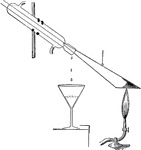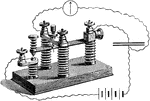Clipart tagged: ‘condenser’
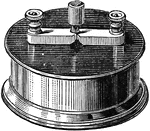
Condenser
"Condensers of a the flat type, consisting of tin-foil conductors separated by thin, flat dielectric…

Condenser
"It consists of a series of upright pipes connected in pairs at the top by semicircular pipes e, e,…
Condenser
"The operation of the condenser is the reverse of that of the air pump, and is a much more simple machine.…
Condenser
"Air is pumped down through shaft A through a downward opening valve into a given chamber. Connector…

Furnace Condenser
in systems involving heat transfer, a condenser is a device or unit used to condense a substance from…
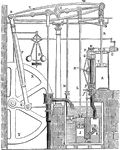
Watt's Double-Acting Condensing Steam-Engine
"Used a boiler to produce steam, chambers to condense it, and drive the pistons of the engine." —Quackenbos…

Idiostatic Gauge
An illustration of an idiostatic gauge which determines the charge in the condenser.

Cylindrical Iron Retort and Condenser
"Wood is heated in cylindrical iron retorts. the volatile materials are cooled, and while a portion…

Leyden Jar
"The most common and, for many purposes, the most convenient form of condenser is the Leyden jar. This…
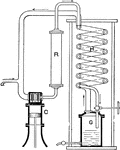
Air Liquefaction Machine
"After thorough drying, the air to be liquefied enters through the pipe a, and in the compresor C is…

Ammonia and Water Cycle Absorption Machine with Condenser and Tank
An absorption machine with ammonia and water mixing. The generator B heats the ammonia and water mixture…
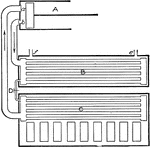
Ammonia Cycle Compression Machine with Vaporizer and Condenser
An illustration of a compression machine. As piston A is pushes ammonia gas through the condenser B…
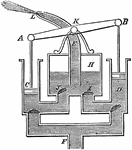
Fire Engine Pump
"Liquid is drawn up pipe F by pistons C and D. Once the liquid passes through the first set of valves,…

Forcing Pump
"Liquid is drawn up the pipe through the valve H. Piston G pushes the liquid through pipe, M, and into…

Application of Steam Engine Jet Condenser used to Pump Well Water
An illustration showing the application of a jet condenser to pump a well. The steam enters the engine…
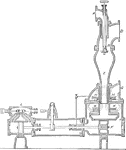
Steam Engine Jet Condenser with Pump
A sliced view of a jet condenser with pump. The steam enters at D, while cold water enters at A. The…
Sciopticon
"A specially constructed paraffin lamp employed with three parallel flat wicks set edgeways to the condenser."…

Steam Engine Condenser with Pumps
An illustration of the water entering and exiting the condenser through pump. The cooling water enters…

Rounded Handle Design Still
A still is a permanent apparatus used to distill miscible liquid mixtures by heating to selectively…

A Still Showing the Separation of a Liquid from a Solid
"Figure 5 shows a form of the apparatus for separating a liquid from another of different boiling point,…

Water Tower Condenser Steam Cooling System in Engine Room
A diagram illustrating cooling steam exhaust of steam engine using a water tower. The water is pumped…

